Interpreting the Animal Choices on the World's Most Popular Programming Books
by Amanda Pickering
If you are a software engineer, or work in an office with software engineers, or have ever been near more than one software engineer, you’ve seen the O’Reilly programming books with the animals. A bit of digging on the company website reveals that each book’s cover animal is selected not by the author but by O’Reilly’s creative director, Edie Freedman, who goes on to state: “I never reveal the reasons behind my choices, but I can assure all interested parties that there is always a reason.” So in the end, it’s up to you to figure out how a Mexican agouti, tarsier, or axolotl will guide you on your programming journey. For now, I did my best to decipher a few myself.
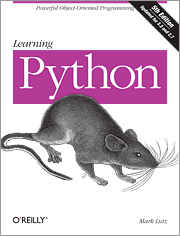
Learning Python
Cover Animal: Wood Rat
Meaning: Python, the programming language, was named in reference to Monty Python, not the snake. But this isn’t a snake. Not even a baby snake, still learning how to snake. It’s an animal that a python would probably eat, which is a huge bummer.
DOES THIS MAKE ANY SENSE: OK so maybe the wood rat has to learn about pythons to avoid death? Still sad.
SHOULD YOU BUY THIS: No, but you should probably learn python, it’s fun!
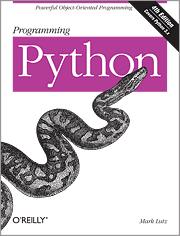
Programming Python
Cover Animal: Actual Python
Meaning: While you’re learning Python you’re just a rat about to be eaten by what you’re trying to learn, but once you know what you’re doing you go on to eating those who are still learning.
DOES THIS MAKE ANY SENSE: A lot, actually, though it’s kind of evil.
SHOULD YOU BUY THIS: This is the only O’Reilly book that chooses such an obvious cover, so they’re probably trying to trick you. Pass.

Python for Data Analysis
Cover Animal: Golden-Tailed Tree Shrew
Meaning: The golden-tailed tree shrew is known for how much alcohol it consumes by drinking fermented palm nectar without ever getting drunk, since its body is designed to process ethanol super efficiently. Maybe you can analyze as much data as the golden-tailed tree shrew can drink alcohol, but you will possibly never get anything out of it?
DOES THIS MAKE ANY SENSE: Suuuure.
SHOULD YOU BUY THIS: Yes. It’s cute. Would learn again.

Learning PHP, MySQL, JavaScript, CSS & HTML5
Cover Animal: Sugar Gliders
Meaning: Look at those huge, adorable eyes. Don’t you want to learn all the web things? Oh but wait, according to the book’s colophon about the cover choice, “One male will assert his dominance by marking the group’s territory with his saliva and then by marking all group members with a distinctive scent produced from his forehead and chest glands.” Men being obnoxious and overbearing? Highly relevant, A+ choice. Sugar gliders, who knew.
DOES THIS MAKE SENSE: BUT THOSE EYES.
SHOULD YOU BUY THIS: Obviously.
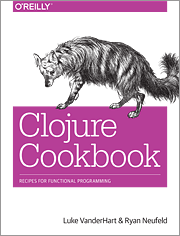
Clojure Cookbook
Cover Animal: Aardwolf
Meaning: A fucking AARDWOLF this is AWESOME I’m going to go learn Clojure right now since without it I wouldn’t know that Aardwolves are real.
DOES THIS MAKE SENSE: I have no idea.
SHOULD YOU BUY THIS: Absolutely.
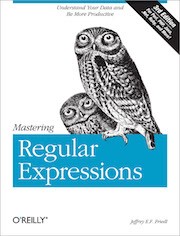
Mastering Regular Expressions
Cover Animal: Some owls
Meaning: Owls. Known in folklore for being wise, but also silent killing machines of small, cute woodland animals. Kind of like computer programmers?
DOES THIS MAKE ANY SENSE: Maybe? A bit ruthless but so is the tech world.
SHOULD YOU BUY THIS: Go for it.

Becoming Functional
Cover Animal: Sheldrake Duck
Meaning: Ducks are pretty functional — their feet are webbed for swimming, but they can also waddle around on land, and they can fly! So functional. Definitely want to become this duck.
DOES THIS MAKE SENSE: A lot, actually.
SHOULD YOU BUY THIS: Yes, unless you don’t like being functional, but maybe you’re into that and that’s cool, the duck isn’t judging you nearly as hard as Regular Expressions Owls.

Understanding Computation
Cover Animal: ???
Meaning: At first I thought this was a rock, which isn’t an animal, what is going on O’Reilly? Or was it maybe coral, which is technically alive. The wavy bits could be some sort of seaweed, which is also alive, but none of these books have plants on the cover. The ocean is huge, dark, scary, and full of all kinds of mysterious animals like that fish with the light on its head and sea cucumbers. This animal must be mysterious and complicated, much like computation. But actually it’s just a bear paw clam. (Not to harsh on clams.)
DOES THIS MAKE SENSE: The book is supposed to teach programmers without a formal computer science background more complicated computing stuff, kind of like figuring out what that clam even is, so yeah.
SHOULD YOU BUY THIS: Sorry but clams are still really boring, some of these books have Aardwolves on the cover. No.

JavaScript: The Good Parts
Cover Animal: Monarch Butterfly
Meaning: O’Reilly’s definitive guide to all of Javascript is 600+ pages long and has a appropriately giant rhino on the cover. No one is going to actually read it all the way through when they can just read the 100-page “good parts” of the language with a beautiful, graceful Monarch butterfly on the cover.
DOES THIS MAKE SENSE: So butterflies are a lot smaller than rhinos, but who says they are better, hmm? Monarch larvae is also poisonous to birds, and so many of these books have birds on the cover.
SHOULD YOU BUY THIS: I don’t trust this butterfly. No.

Learning Java
Cover Animal: Tigers
Meaning: Did you know that in the next ten years, 1.4 million programming jobs will be created in the forest, but only 400,000 tiger cubs will study computer science at tiger school?
DOES THIS MAKE ANY SENSE: Yes :’(
SHOULD YOU BUY THIS: Definitely.
Amanda Pickering Learns to Code in Brooklyn.
Cook the Grape
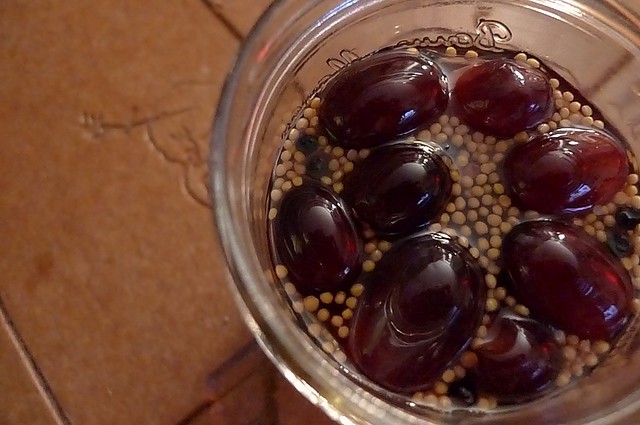
Here’s a controversial opinion: Grapes are very good. The grape vines in places that suffer through winter are still pumping out the last of the season’s fruits, which means two things: First, your standard-variety supermarket table grapes are very cheap. Second, and more importantly, you can get locally grown varieties, which have way more flavor — sweet and tart and floral and bitter all at once, with that very particular pop that only comes from a grape whose skin is less attached to its flesh than your typical supermarket grape — at the farmers market. And they’re pretty cheap.
The most common way to eat grapes is as follows: Eat a grape. That’s it. It’s a pretty good strategy, really. But I suspect that, because they are so good for munching, people tend to stop there and assume that’s all that can be done with them. This is false; there are many more things to be done with grapes.
As far as varieties of grapes go, there are about a billion, and I can’t keep track of them. Typically, though, they are placed into one of four major categories, based on color: white (read: green), red, blue, and black. Generally speaking, grapes get juicier, sweeter, and richer the darker they get; think of how sweet and almost cloying a concord grape is compared to a white table grape. The best way to approach a farmers market grape booth is simply to eat a couple from each bin and figure out which one you like. But, because I like to cook them as much as I like to snack on them, I find that certain categories of grape (or, at least, grapes with certain characteristics) have ideal uses in the kitchen.
My favorite grape to eat raw is always a real firm grape, on the tart side, with a good pop when you bite into it. That usually leads me to the white grapes, like the marquis and lakemont varieties. These also tend to be my favorite for…pickling. Pickled grapes! What? Pickling grapes is not much different from pickling anything else; I like to do a quick pickle, because I am impatient and because sterilizing jars is a pain and because I’m not going to be storing these in the cellar for the winter, I’m going to be eating them very soon. Pickled grapes are mildly sour, but somehow more savory than you’d expect a grape to be. The texture can soften — tips for avoiding that in a second, if you want — but mostly, pickled grapes taste like sweet-and-sour grape candy.
To pickle: pour some apple cider vinegar, water, and sugar (I like light brown for this) into a saucepan at a ratio of about 4:2:1, with a pinch of salt. This is less sugar than you’d use for, say, pickling an onion or a carrot, because the sugar content of a grape is much higher. Stir that all together, crank on the heat, and as soon as it starts to simmer, pour it over a bunch of grapes that you’ve placed in a nonreactive container. (Glass is best for this; metal will imbue a metal-y flavor and plastic is scary and could melt.) Cover loosely, let it come down to room temperature, then cover tightly and put in the fridge, where it’ll keep for, oh I don’t know, about two weeks I guess.
You can considerably embellish the flavor and texture of your pickled grapes with a couple of additions. Given that it’s fall, I like to add some autumnal flavors, especially cinnamon and allspice; just sprinkle in some ground spices or toss in a whole cinnamon stick or a few allspice berries in with the vinegar and sugar and water at the beginning of the recipe. Also: the grapes, depending on variety, will sometimes split. I don’t really care about this, but if you want to keep them crisp, let the pickling liquid cool for about five minutes before pouring it over the grapes. You can also add a tiny amount (like, a quarter teaspoon) of alum, a crystal that helps pickles stay crisp due to some sort of science I don’t really understand.
“But what the hell do I do with pickled grapes?” you might be asking. Okay, reasonable question, although maybe you shouldn’t be so negative before you even try them??? Anyway, pickled grapes are really excellent on a cheese plate, especially with creamy cheeses like chevre and brie. They also are spectacular in your regular old (delicious) chicken salad (I like this recipe, though I use Greek yogurt instead of American and omit the walnuts). “It’s a new twist on an old classic,” is what I’d say if I were a contestant on Top Chef, which I’m not (yet).
Another good thing to do with grapes: roast them. Roasting brings out a totally new side of grapes; the very high sugar content makes them caramelize spectacularly well. I like to use sweeter grapes for this, especially red or black grapes, like the various varieties of muscat, or any of the grapes that are named after planets. Jupiter! Mars! Saturn! Okay!
Anyway, roasted grapes go best as an accent to super rich main ingredients. Here’s a good one: Halve about two dozen Brussels sprouts, toss in a bowl with maybe a an eighth of a cup of olive oil, grapes, walnuts, and a lot of fresh thyme. Spread on a baking sheet, making sure to place the halved sprouts flat side down, with a lot of room to spare — overcrowding makes sprouts steam rather than get roasty and crispy — and shove into a 400-degree oven for maybe forty minutes, until the sprouts are all caramelized. Serve over quinoa or rice or farro with a squeeze of lemon and a little extra olive oil.
I also make grape popsicles, which are so different from the purple supermarket brand popsicles that it makes you wonder what kind of grapes the science robots at Popsicle, Inc., have been eating. It’s a really easy recipe, so easy I’m not even sure I can call it a recipe. Take grapes. Wash them, put them in food processor or blender, blitz until foamy liquid. Then take out your finest strainer — I have this one — and maybe even line it with cheesecloth if you’re real sensitive about bits of stuff in your popsicles. Pour the grape puree into the strainer, then stick your hand in there and move the puree around to make sure all the juice gets through. Eventually you’ll have to press a bunch of gross-ish grape guts into the strainer to get the last bit of juice out. Then, put them into popsicle molds. Freeze them. Wait until they frozen, then eat them and be amazed. Not everything has to be complicated, although if you want to toast some whole green cardamom pods and grind them in a seasoned molcajete now would be the time. JK don’t do that that would be ridiculous just eat the popsicles.
Okay, so I have never recommended a recipe without first having executed it myself, usually many, many times. But I couldn’t get my shit together in enough time to actually test this recipe out. This looks so good, though, I just have to mention it. Here you will find a recipe for concord grape pie, which looks like kind of a real pain in the ass (separating the skins from the flesh seems annoying, if not that difficult), but look at that end result. Holy shit that looks great. Maybe we can all try it together?
Grapes aren’t so different from most fruit in that the idea of cooking or manipulating them beyond just eating them raw can be sort of threatening, or even just not that appealing. But cooking them can reveal whole new dimensions of flavor; the soft savory punch of a pickled grape or the deep burnt-sugar taste of a roasted grape are new tools to keep in your toolbox (not literally, since you should not store grapes of any sort in a toolbox). Cook grapes! And also eat them, eating them is good too.
Crop Chef is a column about the correct ways to prepare and consume plant matter, by Dan Nosowitz, a freelance human who enjoys hot salads and lives in Brooklyn, naturally.
Photo by Laura
The Homeland Generation
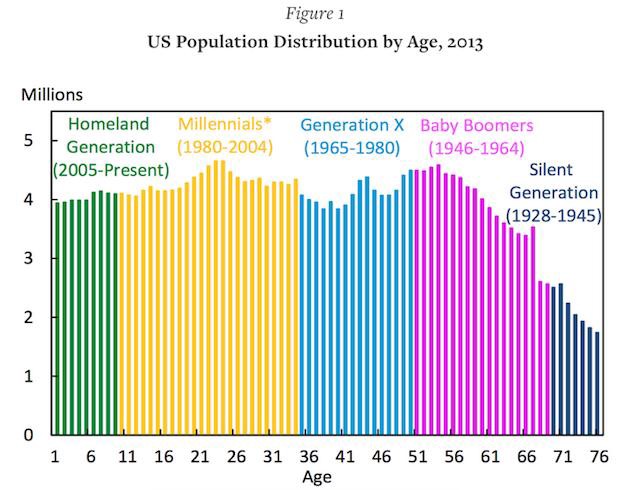
This is Figure One in a document published by the White House, on Medium, called “15 Economic Facts About Millennials.” It is included to establish a premise for the post: that the “Millennial generation will continue to be a sizable part of the population for many years.” It seals off that generation at 2004, which means the next one begins at 2005. The next one is labeled without explanation: The Homeland Generation.
This data is credited to the Census Bureau, but presumably only the raw population numbers — the “Homeland Generation” is not, apparently, an official census designation. The choice to use it, then, fell to the people handling communications for the White House.
These people would have been presented with a number of options, none of them appealing: Generation Z. Post-millennials. Plurals. These are early and over-eager names concocted by marketers, and it is obvious. Gen X didn’t know it was Gen X until it was teenaged; the first millennials were old enough to roll their eyes at the term as soon as people started using it earnestly. Coinages are deliberate. Winners are decided in retrospect. There was no need for the White House to use a distinct name, here, except to fill a blank label in a chart. Not the current administration’s problem!
This was what a political operative might call an unforced error. The Homeland Generation is not just an unnecessary choice but a jarring one; its optics are conspicuously clumsy considering that optics are the sole concern of this document. Read it from the perspective of a non-American to get the full effect: The “Homeland Generation” sounds paranoid, xenophobic, and ready to fight. It’s almost like something out of speculative fiction, what a writer might call the first generation of people after some great collapse shattered the modern world into nationalist tribes. It would be very useful in this context — it would convey fear and selfishness and reversion, instantly, to use such a darkly coded word. It’s the kind of name you would give to a lost generation, seeing as the “Lost Generation” is already taken. The reader would get it.
William Strauss and Neil Howe, who are famous for attempting to rewrite history in terms of cyclical generations, are both the most likely people to have defined the Homeland Generation and, as far as I can tell, some of the only ones who have tried:

The name doesn’t have some clever double-meaning, and there’s nothing arch about it. The Homeland Generation is a generation named in language of a terror-obsessed era that it was too young to experience acutely; a generation subjected to crushing surveillance by suddenly and unaccountably insane parents, fixated on their own pre-war-on-terror, pre-millenial childhoods. The Homeland Generation: It’s what it sounds like! The first sentence of the next section in the piece, by the way, which was published in the Harvard Business Review, begins: “If you are a marketer planning the next generation of consumer products or services…”
According to the Strauss–Howe generational theory, which has been most enthusiastically embraced by the marketing community — virtually all other online references to the Homeland Generation are concerned solely with theoretical marketing strategies, sometimes referred to as future “realities” — the Homeland Generation is the first recurrence of a “suffocated” generation that is “entering YOUTH” since the Silent Generation, which, according to their boundaries, left youth in 1946.

(In case you’re tempted to place stock in this unfalsifiable grand unified theory of generational cycles, something to reckon with: this model categorizes both the “GI” generation (1908–1929) and Millennials as archetypal “heroes.”)
The “Silent Generation” name caught on after a Time essay in 1951:
Youth today is waiting for the hand of fate to fall on its shoulders, meanwhile working fairly hard and saying almost nothing. The most startling fact about the younger generation is its silence. With some rare exceptions, youth is nowhere near the rostrum. By comparison with the Flaming Youth of their fathers & mothers, today’s younger generation is a still, small flame. It does not issue manifestoes, make speeches or carry posters. It has been called the “Silent Generation.” But what does the silence mean? What, if anything, does it hide? Or are youth’s elders merely hard of hearing?
The piece is a vague and fascinating attempt at categorization. It does, at least, include the voices of its constituents. It reads as an earnest attempt at understanding. It’s also bleak as hell: “The fact of this world is war, uncertainty, the need for work, courage, sacrifice,” the writer concludes. “Nobody likes that fact. But youth does not blame that fact on its parents dropping the ball. In real life, youth seems to know, people always drop the ball. Youth today has little cynicism, because it never hoped for much.” These kids were born during the Great Depression.
Defining a generation in retrospect gives history order; defining it in real-time is really an act of prediction. That’s why marketers are so interested in doing it: They are speculators. The White House report, which is otherwise an exhaustive catalog of things supposed in the press about Millennials, does the speculators a favor — it raises the stock in one possible ticker symbol. (A speculator might say: It’s even better that it seems like an accident. Someone in Washington just Googled “what comes after Milliennials” and this is what they found? That’s not nothing! It’s a sign of the strength of the brand.)
The report also gives Millennials pretty good odds:
So, while there are substantial challenges to meet, no generation has been better equipped to overcome them than Millennials. They are skilled with technology, determined, diverse, and more educated than any previous generation. Millennials are still in the early stages of joining and participating in the labor market.
But the Homelanders? It’s already too late for them.
A Poem by Kathleen Ossip
by Mark Bibbins, Editor
The Arrival of Spring
(Botticelli)
“So then you were….”
“So then I was what?”
And the whole seabeach
just beyond the trees
widens. Italian? Blonde?
Charming? In a
scarcity economy,
kindness is bread,
and if kindness comes
from lust, so be it.
A bubbly state of
monumental
opportunity has left
every gal a
little bit pregnant,
while every guy
hangs around the edges,
stirring the shit.
And yet, they aren’t
heinous, an oldtime
ardor prevails.
Of course we are
endlessly
fascinating to ourselves.
What you did for me,
what I did for you,
masters the world
with brave
dark injury,
afterwards sitting
criss-cross-applesauce
on the meadow floor.
And even when
mastered,
broken,
we
feel pleasantly free.
Love triumphs
over brutality
because brutality
must end
with death, and love
never does, it
can always
find a new
sky or a
sheepdog,
and we believe
this because
it’s our job to
believe it,
and if you can’t
believe it perhaps
you need a harder
kick in the ass
or whispered
admiration
delivered in a
loose slurred voice.
Notice, please,
the freshness,
the tang that says
the only thing
to do is keep
working. Master
the same world,
please, with petite
licks of ecstasy.
Remember, the
sweat weather
is months away.
Beneath the cult,
a baroque mystery,
mischievous and
sans pain.
Under the feet,
the splaying myrtle.
Around the pretty
faces, the year’s first
no-see-ums.
Below the canopy,
all is explained,
everything’s
explainable
and explained.
Kathleen Ossip is the author of The Do-Over, which will be published in 2015; The Cold War, which was one of Publishers Weekly’s best books of 2011; The Search Engine, which was selected by Derek Walcott for the American Poetry Review/Honickman First Book Prize; and Cinephrastics, a chapbook of movie poems.
You will find more poems here. You may contact the editor at poems@theawl.com.
The Tortilla's Last Light
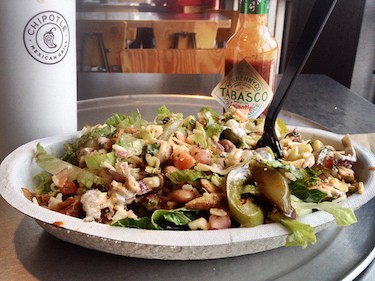
In May, in the course of conducting what could be the Awl’s first annual Chipotle State of the Union survey, idk, Bobby Finger discovered that far more people ordered bowls than burritos, even though Chipotle is generally known as a burrito chain. Today, in a piece on the rise of grain bowls as a meal format — which strangely omits the Korean dish dolsot bibimbap, the ultimate bowl of grains and cool stuff — is official confirmation of the tortilla’s fall from grace: “For evidence that the bowl has gone mainstream, look no further than Chipotle, whose burrito bowl is the biggest selling item on the menu.”
Chipotle, America’s favorite bowl chain. Weird.
Photo by David Ciani
New York City, October 8, 2014

★★★★ Clouds the color of heavy cream stood below whiter clouds in the morning west. Then somehow they darkened to purple before resolving into pert, rounded shadings of gray below and white above. The breeze had an easygoing strength to it. The choice between walking down to the B/D and taking the 1 was so arbitrary and narrowly balanced, it took the impact of an unyielding turnstile to shake loose the realization that one path was supposed to involve using a MetroCard. Beside the bodega downtown, the tops of the trio of trees had quietly thinned to bare twigs. The late-day glow got a few feet into the glassed conference rooms at the street side of the dark office, if not into the office proper. Bright late clouds illuminated the shaded streets, and there were scattered bits of pink up there.
History and the Modern Presidency
Barack Obama, 2005, to the graduating class of Knox College:
The true test of the American ideal is whether we’re able to recognize our failings and then rise together to meet the challenges of our time. Whether we allow ourselves to be shaped by events and history, or whether we act to shape them. Whether chance of birth or circumstance decides life’s big winners and losers, or whether we build a community where, at the very least, everyone has a chance to work hard, get ahead, and reach their dreams.
Barack Obama, 2009, accepting the Nobel Peace Price:
For all the cruelty and hardship of our world, we are not mere prisoners of fate. Our actions matter, and can bend history in the direction of justice.
Barack Obama, 2014, on Medium:
History has dubbed you the “Millennials.”
A Field Guide to the True American Diner
by John Leavitt
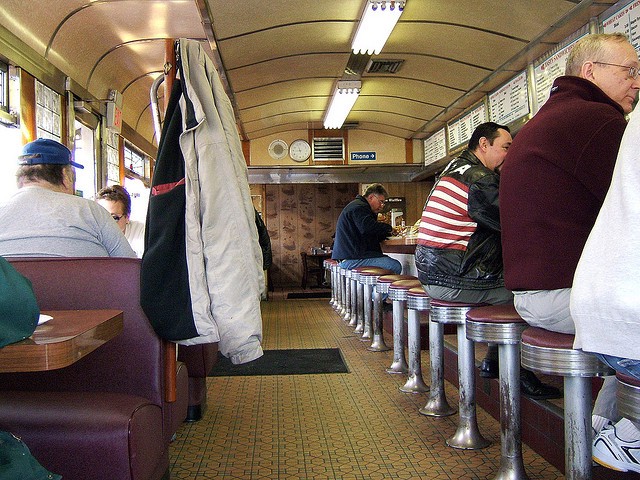
Hello, I am an American from New Jersey and I care about diners.
The True American Diner is a casual sit-down restaurant that serves breakfast, lunch, and dinner — all three meals — all day, often for all twenty-four hours of it. Time has no meaning in the presence of eggs, steak and hash browns. Portions are large but not obscene; sides are available with nearly everything. The food is sturdy and simple, a few strong flavors and techniques. Nothing in a True American Diner couldn’t be made by a moderately skilled cook in their own kitchen: corned beef hash, club sandwiches, and a variety of scrambles.
Menus are oversized and presented as a single, huge laminated page with unavailable items taped over, or in a leather-bound binder. Everything in the “diet” section of the menu contains cottage cheese or is steamed. There are daily specials, and they come with soup or salad. Chicken Parmesan and mozzarella sticks must be available. Ketchup is served in bottles, not packets. The coffee is available and drunk at every meal; cups may even be set out on the table before patrons arrive. Refills are free and assumed to be always wanted, unless you indicate you want no more by turning the coffee cup over. Dessert is pie, and if displayed in a glass case at the end of the counter, it must rotate. We did not free ourselves from England’s cruel yoke to have static pie.
A server takes your order, but you pay at the cashier, which will have a small bowl of pillowy mints that taste like toothpaste. (The area near the cashier should have framed, signed headshots of the various celebrities and notables who have eaten at the diner. Ideally, these people are long-dead regional celebrities you’ve never heard of with one famous name, like Keanu Reeves, prominently displayed in the mix.) The server at a True American Diner may be a man or a woman, young or old. They can be curt, motherly, sassy, or taciturn but they always take your order on a small notepad and deliver food with speedy efficiency and stunning acts of plate balancing. The ability to effortlessly juggle nine different heavy platters of breakfast food at 10 pm is the hallmark of the True American Diner server. There should be a sign that asks you to “Please Wait To Be Seated” or “Please Seat Yourself,” and it should always be turned to “Please Seat Yourself.”
True American Diners run small, with a capacity that tops out at around sixty-five people plus counter space; thirties-style railcar diners rarely seat more than twenty people, but have long counters running the length of the restaurant. They are single rooms, with no areas for anything but food service. There is also no outdoor seating in a True American Diner. Where are you, a bistro in France, about to order a country pate’ avec moules frites?
But not all diners are exactly alike. There are vintage sleek bullet diners, modern silver-and-neon highway beacons, converted farmhouses, dusty desert truck stops, low-slung ranch-styles attached to motels, and mansard roof shoeboxes full of fake grapevines that resemble suburbian banks. Somewhere, there is neon. There are always leather or leather-ish clad booths in a True American Diner; without them, it’s just a breakfast joint.
In the east, True American Diners are located either in the downtown area or just off a major road leading into it. In the west, diners are more likely on highways in between towns, merging with that other American institution, the truck stop. If a town has more than one, there will be unresolvable argument over which is “the good one.” People are very loyal toward “their” diner because a True American Diner will be family-run or at least locally operated. The ideal True American Diner owners are Greek, or at least willing to pretend.
Chain imitations of True American Diners try too hard. They impose a false, forced sense of familiarity and nostalgia. These are the places with tableside jukeboxes that never work and vintage cars and Happy Days-esque kitsch bought by the yard and glued onto the walls. Attempt no luncheons there. (A notable exception to this is the Waffle House, a southern chain that’s managed to retain True American charm and values. So integral are Waffle Houses to the communities they serve that FEMA uses the informal Waffle House Index to gauge the severity of a natural disaster by what’s available on the Waffle House menu.)
True American Diners exist in a bubble of no-nonsense egalitarianism; they exist outside socioeconomic distinctions, because there is something for everyone. There are always at least two retired people at the counter; they will never speak to each other or anyone else. Someone is on the run from the law; someone is the law. There are always at least two teenagers in a True American Diner and they are simultaneously talking about nothing and having The Most Important Conversation Of Their Lives. You wouldn’t go there for a special occasion, but you can always go there after one: proms, weddings, or funerals.
Without diners, where would outlaws stop to discuss bank robberies over coffee? Where would strippers go when they get off work? Where would covert agents talk about business with waffles or lovers arrange clandestine meetings? Without diners, are you even sure you’re in America?
John Leavitt is an American from New Jersey who cares about diners.
Photo by Tony Fischer
Girls in Country Songs
Girls in Country Songs
by Alice Bolin
The beginning of Maddie & Tae’s video for “Girl in a Country Song” is familiar to any CMT viewer: two sun-tanned hotties in cowboy boots and bikini tops walking on a dirt road, ogled by plaid-shirted men hanging out on their pickup truck’s tailgate. But then we pan past some hay bales to Maddie & Tae, two blonde nineteen-year-olds from Texas and Oklahoma, respectively, holding guitars and rolling their eyes. “Well, I wish I had some shoes on my two bare feet,” they sing, “And it’s getting kinda cold in these painted-on cut off jeans.” In the rest of the song, Maddie & Tae not only call out country bros’ clichés, but directly quote and satirize a dozen of the genre’s biggest acts: artists like Blake Shelton, Luke Bryan, Florida Georgia Line, and Jason Aldean, who have, taken together, easily held the number one spot on Billboard’s Hot Country Songs Chart for eighty percent of 2014. This is a brazen move for two teenagers to make in their first single — especially at a time when number one singles by women on the country charts are coming at a rate of one per year.
Country music has been in extreme party mode for going on three years. Nashville producers discovered autotune and drum machines, and country radio transformed into a permanent tequila-fueled dirt-road bonfire bacchanal. In a basic way, “Girl in a Country Song” is meant to address the annoying and gross ways these songs — where singers evoke guys who talk too loud in bars, yell stupid things out of their cars, and are so drunk that they mess up their own pickup lines — talk about women. Maddie & Tae counter a lyric like Florida Georgia Line’s “Slide your little sugar shaker over here” in the only appropriate way: “There ain’t no sugar for you in this shaker of mine,” they sing. “Tell me one more time, ‘you gotta get you some of that’/Sure I’ll slide on over, but you’re gonna get slapped.” As they note later, “Conway and George Strait never did it this way.”
But “Girl in a Country Song,” as it climbs higher in the charts, has bigger implications than pointing out sexism in some country lyrics. The process of releasing the song was incredibly fast: it was written on St. Patrick’s Day and released less than four months later. “The song is so topical and it’s what’s going on right now,” Maddie & Tae told Rolling Stone Country. “It’s like, ‘Gotta get it out there!’” Alternatively, it’s a single like Lorde’s “Royals” that so devastatingly skewers pop music rhetoric that for a moment, the industry is left gaping. “I’m not really familiar with that,” Brian Kelley form Florida Georgia Line crankily told the Chicago Tribune when asked about “Girl in a Country Song.” His anger doesn’t read like that of someone who has been criticized, but of someone whose comfortable throne suddenly seems less secure. “All I’m gonna say about that is, I don’t know one girl who doesn’t want to be a girl in a country song. That’s all I’m gonna say to you. That’s it,” he said. “He’s a dude,” Maddie & Tae responded. “He doesn’t know what it’s like to be a woman, or to be a girl in one of those songs.” (In the same radio interview, they were quick to deny any allegations of feminism, though.)
If you watch “Girl in a Country Song” on YouTube, one of the videos suggested in the sidebar will no doubt be RaeLynn’s “God Made Girls.” RaeLynn is another young woman from Texas — not a teenager though, she’s twenty — a product of Blake Shelton’s The Voice juggernaut making her first venture in the country charts. The “God Made Girls” video features an elfin woman on a horse, a ballerina throwing dust (?), Raelynn gazing in many mirrors and dancing around a campfire looking like an extra from Xena, Warrior Princess. “I really wanted it to showcase my personality,” RaeLynn told PopCrush about the video. “I love whimsical things and forests. I’m really into all that. I wanted them to bring that to the table with this music video and show the mystery of a woman.” The song is a saccharine horror show, with RaeLynn singing in a cloying twang, “Somebody’s gotta wear a pretty skirt,/Somebody’s gotta be the one to flirt/So God made girls.” Other reasons for girls’ existence include that “somebody’s gotta be the one to cry” and “somebody’s gotta let him drive.” “Somebody’s gotta put up a fight,” RaeLynn sings, “Make him wait on a Saturday night/To walk downstairs and blow his mind.” Like Maddie & Tae sing about country’s attitude towards women, it’s like “all we’re good for/Is looking good for you and your friends on the weekend/Nothing more.”
Blake Shelton’s role as one of the coaches on NBC’s The Voice, a popular reality singing competition, puts country on equal footing with pop, rather than treating it as a niche. This means that country singers, whose audience is extremely loyal, do very well on the show, with one of Shelton’s mentees winning or coming in second in five of the show’s six seasons. It also means that Shelton, in addition to being a huge star, has become a powerful figure in country music; one of the few ways, it seems, for a woman to get into the top fifteen of the country singles charts in the past year was to be one of Shelton’s singers on The Voice, like Cassadee Pope and Danielle Bradbury, Shelton’s wife, Miranda Lambert, is one of the most (read as: only) prominent women in current country music, and she has definitely benefited from his TV star status. Lambert, along with Carrie Underwood, went to number one this summer with their song “Somethin’ Bad.” They were the first women in a year and a half to do so.
RaeLynn didn’t do particularly well on The Voice — she was eliminated in the third week — but after the show, she was reportedly “adopted” by Shelton and Lambert, staying in their house in Los Angeles and singing on Shelton’s number one hit “Boys ‘Round Here” alongside Lambert’s super group The Pistol Annies. “We’ve already written a song and started another one,” Lambert told a Florida radio station in 2012 about RaeLynn. RaeLynn’s songwriting career has flourished since then — she is signed to megaproducer Dr. Luke’s publishing house, writing songs for pop stars like Becky G. “I wrote that song with three chicks in Nashville,” RaeLynn said of “God Made Girls,” eliding the fact that the “three chicks” were veteran songwriters Lori McKenna, Nicolle Galyon, and Liz Rose. McKenna is a well-known country folk artist who has co-written three top ten country hits in the past year; Galyon is another of Blake Shelton’s The Voice singers who co-wrote five songs on Lambert’s 2014 album Platinum; and Rose was Taylor Swift’s closest collaborator from the beginning of her career, co-writing twenty of her songs. All of these women, including RaeLynn, in other words, should have known better than to write “God Made Girls.”
It’s easy to read a little desperation into the career moves of female country artists and songwriters — is the generally female-free atmosphere of today’s country radio why country legend Trisha Yearwood’s idea of a comeback was getting her own show on the Cooking Channel? So there is some logic to hitching your wagon to one of the most popular men in country and releasing a song more over-the-top sexist than any “bro country” party song. But RaeLynn seems to have topped out at number thirty on the charts, and Shelton’s other protégés, Cassadee Pope and Danielle Bradbury, were unable to recreate their initial success with follow-up singles. In general, the women who have triumphed in country’s current frat party atmosphere are unapologetic and out for blood — like Lambert, although she usually vents her anger in hyperbolic ways, singing about being a fugitive from the law or shooting her husband.
Maddie & Tae have gained country radio success without Shelton — with a song that makes fun of Shelton — and without a larger-than-life narrative as a palliative to their song’s feminism. Part of the reason for their breakthrough has got to be that when they say, “We love all the artists that we’re picking at, and we love their music. We are fans of ‘bro country,’” you believe them. “Girl in a Country Song” is a masterpiece of the country-hip hop hybrid genre that Florida Georgia Line and Luke Bryan have made their millions on, its drum machine beats and syncopated lyrics mingling with steel guitar and mandolin. As shallow and lazy as recent country party anthems’ lyrics are, the reason these songs are popular is because their production is actually progressive, making savvy use of dance and pop elements to welcome the country listenership to the twenty-first century. “These guys have some incredible tracks,” Maddie & Tae told Rolling Stone Country, “We’re like, ‘We can’t poke fun at them if our song doesn’t live up to how awesome theirs are.’” In seeking to live up to these hits, they’ve innovated on them, showing you can write a country club banger that is smart and self-aware. More of country music’s women should follow their lead — not just in calling male artists out on their bro country bullshit, but in appropriating some of the bros’ style. “At the end of the day, we’re just trying to be honest,” Maddie & Tae told Rolling Stone Country, “and hopefully get more females on the radio.”
Country Time is an occasional column about country music.
Alice Bolin is a writer living in Los Angeles.
The Penthouse at the Edge of the World

A superlative piece of New York real estate:
And there on the map lies the farthest residential building from a subway entrance in Manhattan according to my analysis: 10 Gracie Square, located at the end of 84th street at the FDR Drive. It is 0.7 miles from the subway station as the crow flies, or 0.8 miles using the grid.
There are plenty of places that are nearly as inconvenient to the subway as this address, 10 Gracie Square, on top of which sits a $18,900,000 penthouse apartment, from which you have an unobstructed view of the Coler Goldwater Specialty Hospital & Nursing Facility, which sits just across the water on Roosevelt Island. But none quite so. (A sample Google review: “This hospital sucks patients killing themselves serve spoiled food and drug dealing so sad nyc what is wrong with you.”)
Interesting how, among the twelve beautiful photos of this apartment, the only blurry one looks east, out the window:

This is the Gracie Square — south of Carl Schurz Park and Gracie Mansion. Which maybe casts Mayor Bloomberg’s storied insistence on taking the subway in a new, slightly heroic light? IF you ignore the fact that he didn’t actually live in Gracie, and IF you also forget that he took an SUV to the subway most days.
Anyway, now we know the actual reason for the Second Avenue subway project: to shave one avenue off the walking commute from 10 Gracie Square.
